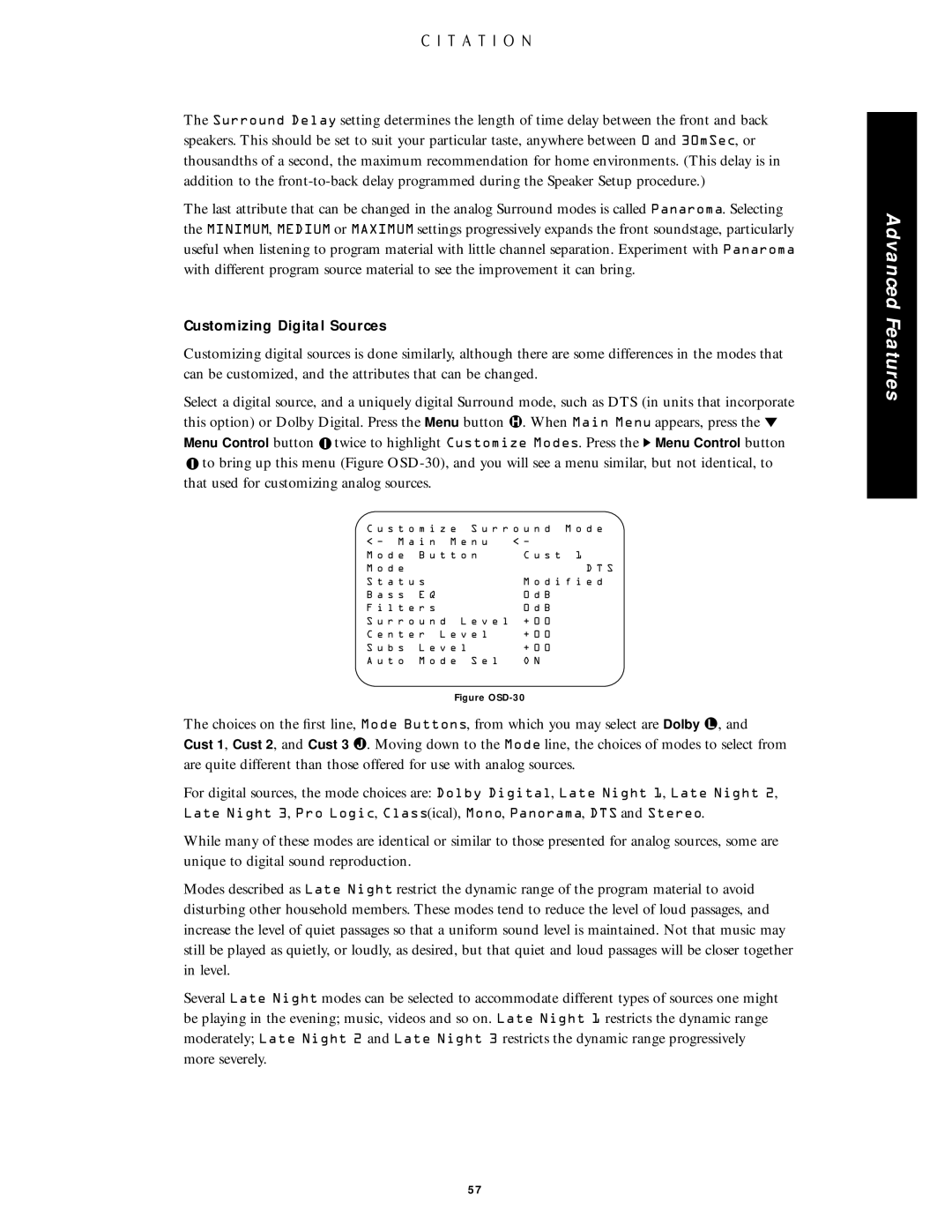
The Surround Delay setting determines the length of time delay between the front and back speakers. This should be set to suit your particular taste, anywhere between 0 and 30mSec, or thousandths of a second, the maximum recommendation for home environments. (This delay is in addition to the
The last attribute that can be changed in the analog Surround modes is called Panaroma. Selecting the MINIMUM, MEDIUM or MAXIMUM settings progressively expands the front soundstage, particularly useful when listening to program material with little channel separation. Experiment with Panaroma with different program source material to see the improvement it can bring.
Customizing Digital Sources
Customizing digital sources is done similarly, although there are some differences in the modes that can be customized, and the attributes that can be changed.
Select a digital source, and a uniquely digital Surround mode, such as DTS (in units that incorporate this option) or Dolby Digital. Press the Menu button ú. When Main Menu appears, press the Û Menu Control button ![]() twice to highlight Customize Modes. Press the Ý Menu Control button
twice to highlight Customize Modes. Press the Ý Menu Control button ![]() to bring up this menu (Figure
to bring up this menu (Figure
C u s t o m i z e S u r r o u n d M o d e
< Ð M a i n M e n u | < Ð |
M o d e B u t t o n | C u s t 1 |
M o d e | D T S |
S t a t u s | M o d i f i e d |
B a s s E Q | 0 d B |
F i l t e r s | 0 d B |
S u r r o u n d L e v e l + 0 0 | |
C e n t e r L e v e l | + 0 0 |
S u b s L e v e l | + 0 0 |
A u t o M o d e S e l | O N |
Figure OSD-30
The choices on the first line, Mode Buttons, from which you may select are Dolby Â, and
Cust 1, Cust 2, and Cust 3 Æ. Moving down to the Mode line, the choices of modes to select from are quite different than those offered for use with analog sources.
For digital sources, the mode choices are: Dolby Digital, Late Night 1, Late Night 2, Late Night 3, Pro Logic, Class(ical), Mono, Panorama, DTS and Stereo.
While many of these modes are identical or similar to those presented for analog sources, some are unique to digital sound reproduction.
Modes described as Late Night restrict the dynamic range of the program material to avoid disturbing other household members. These modes tend to reduce the level of loud passages, and increase the level of quiet passages so that a uniform sound level is maintained. Not that music may still be played as quietly, or loudly, as desired, but that quiet and loud passages will be closer together in level.
Several Late Night modes can be selected to accommodate different types of sources one might be playing in the evening; music, videos and so on. Late Night 1 restricts the dynamic range moderately; Late Night 2 and Late Night 3 restricts the dynamic range progressively more severely.
Advanced Features
57
